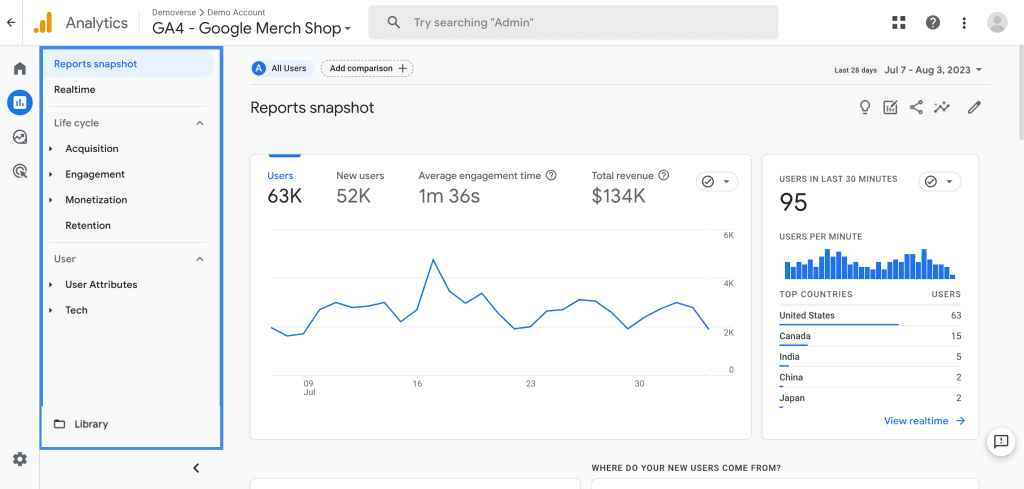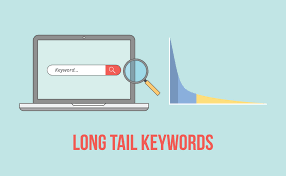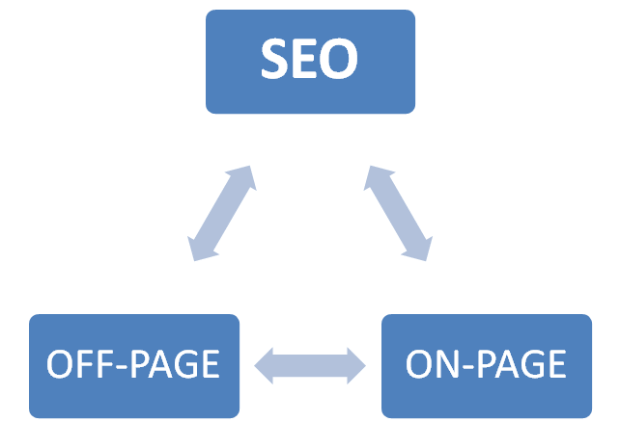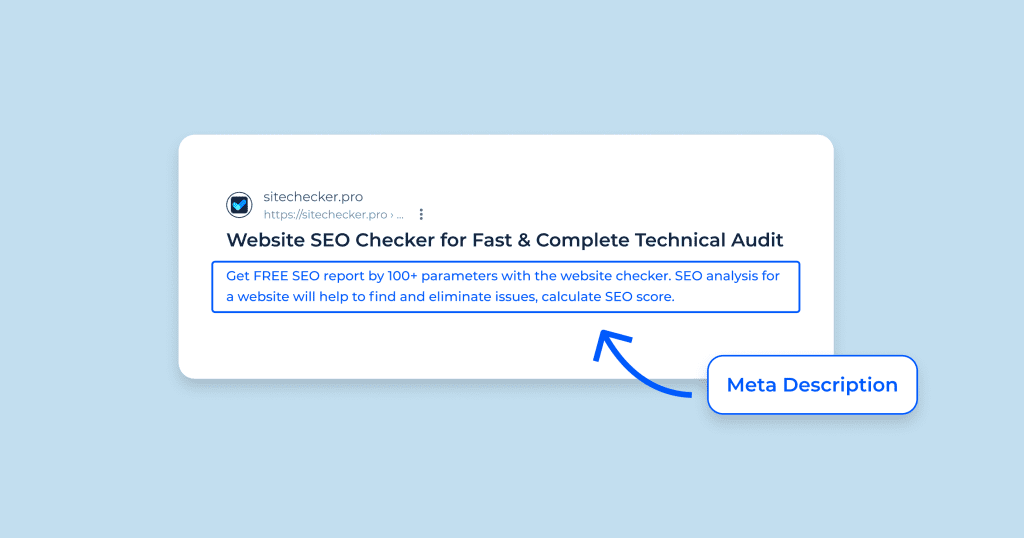Key Takeaways
- Strategic Collaboration is Key: Successful SEO outsourcing in 2024 hinges on clear communication and collaboration. Establish transparent channels with your SEO agency to align goals and ensure a symbiotic partnership.
- Data-Driven Adaptation: Regularly monitor SEO metrics, adapt strategies based on analytics insights, and embrace continuous improvement. Data-driven decisions are the compass guiding your SEO journey to sustained success.
- Uphold Ethical SEO Practices: Navigate the digital landscape with integrity. Prioritize white hat SEO practices – from high-quality content creation to ethical link building – for long-term online visibility and credibility.
In an era where digital supremacy reigns supreme, the prowess of Search Engine Optimization (SEO) stands as the linchpin differentiating thriving businesses from mere contenders in the online arena.
As we step into the transformative landscape of 2024, businesses find themselves at a pivotal crossroads, faced with the strategic choice of either managing their SEO efforts internally or outsourcing to specialized agencies.
This introduction sets the stage for a comprehensive exploration, guiding businesses through a meticulous and forward-looking roadmap on “How to Outsource SEO Efficiently: A Step-By-Step Guide in 2024.”

The SEO Imperative: Adapting to the Ever-Evolving Digital Ecosystem
In the first leg of our journey, we unravel the core significance of SEO in the contemporary digital ecosystem.
Gone are the days when SEO merely revolved around keyword optimization and link building.
Today, it’s a dynamic discipline, intricately woven into the fabric of user experience, technical intricacies, and the nuanced algorithms of search engines.
As businesses grapple with this complexity, the imperative to adapt and optimize becomes more pronounced.
We explore the shifting SEO landscape, emphasizing why outsourcing has emerged as a strategic necessity for businesses striving to thrive in the competitive digital realm of 2024.
Decoding the Outsourcing Dilemma: A Strategic Overview
As businesses stand at the crossroads of managing SEO in-house or entrusting external specialists, the second part of our guide strategically navigates through this dilemma.
We delve into why outsourcing SEO in 2024 is not merely a convenience but a calculated strategic move.
Amidst the incessant changes in search engine algorithms and the escalating demand for specialized expertise, businesses must strategically assess their unique needs, objectives, and budget constraints.
This section equips readers with the insights needed to make informed decisions on the outsourcing front.
The Blueprint for SEO Success: A Step-By-Step Guide Unveiled
With the groundwork laid, our guide unfolds a meticulous step-by-step blueprint for outsourcing SEO efficiently in 2024.
From the initial assessment of current SEO strategies and setting specific goals to navigating the myriad options of SEO agencies, we leave no stone unturned.
Each step is intricately designed to empower businesses with the tools needed to make optimal choices, ensuring that the outsourcing process aligns seamlessly with their overarching business objectives.
Crafting Collaborative Success: Communication Protocols and Goal Alignment
Effective communication forms the bedrock of successful SEO outsourcing.
In this segment, we emphasize the importance of establishing clear communication channels with the chosen SEO agency.
From setting expectations and goals to defining communication protocols and ensuring transparency in reporting, we dissect the nuances of collaborative success.
The goal is not just outsourcing for the sake of it but fostering a symbiotic partnership that propels businesses toward sustained SEO excellence in the ever-evolving digital landscape of 2024.
Strategic Collaboration in Action: Keyword Research and Optimization Strategies
No SEO strategy is complete without a robust keyword foundation.
This section delves into the collaborative efforts required for effective keyword research and strategy formulation.
From conducting keyword research to aligning strategies with business objectives, businesses learn to leverage the specialized expertise of external agencies to maximize their organic search potential.
This collaborative approach ensures that the chosen SEO partner becomes an extension of the business, aligning keyword strategies seamlessly with overarching objectives.
Optimization Unleashed: On-Page and Off-Page Mastery
With keywords in place, our guide takes a deep dive into the intricacies of on-page and off-page optimization.
From collaborative website audits to on-page optimization strategies, businesses learn to delegate tasks effectively while maintaining control over critical aspects of their digital presence.
Off-page optimization, including link building, is explored with an emphasis on best practices, ensuring that businesses not only optimize for search engines but also enhance the overall user experience.
Numbers That Matter: Monitoring and Analytics in the SEO Landscape
In the ever-evolving digital ecosystem, success hinges on data-driven insights.
This segment equips businesses with the tools to set up analytics for performance tracking, monitor SEO metrics and KPIs, and make informed adjustments based on analytical insights.
Navigating the maze of numbers becomes a strategic endeavour, allowing businesses to adapt and refine their SEO strategies in real-time.
Iterative Excellence: Reviewing and Adapting Strategies for Long-Term Success
SEO is not a one-time endeavour; it’s a continuous process of refinement and adaptation.
In this penultimate section, we explore the importance of regular performance reviews with the chosen SEO agency.
By making data-driven adjustments to strategies, businesses ensure that their SEO efforts remain not only relevant but also ahead of the curve.
This iterative approach positions businesses for long-term success, fostering an environment of constant improvement and adaptability.
Upholding Integrity: Ensuring White Hat SEO Practices
As we reach the culmination of our guide, we delve into the ethical dimensions of SEO. Emphasizing the significance of white hat SEO practices, we guide businesses on avoiding black hat techniques and potential penalties.
Collaboration with the chosen SEO agency is instrumental in upholding the integrity of SEO efforts, ensuring not just short-term gains but sustainable, long-lasting success.
As we bid adieu to this comprehensive guide, businesses are armed with the knowledge and insights needed to not only navigate but conquer the dynamic world of SEO outsourcing in the digital age.
But, before we venture further, we like to share who we are and what we do.
About AppLabx
From developing a solid marketing plan to creating compelling content, optimizing for search engines, leveraging social media, and utilizing paid advertising, AppLabx offers a comprehensive suite of digital marketing services designed to drive growth and profitability for your business.
AppLabx is well known for helping companies and startups use SEO to drive web traffic to their websites and web apps.
At AppLabx, we understand that no two businesses are alike. That’s why we take a personalized approach to every project, working closely with our clients to understand their unique needs and goals, and developing customized strategies to help them achieve success.
If you need a digital consultation, then send in an inquiry here.
How to Outsource SEO Efficiently: A Step-By-Step Guide in 2024
- Understanding Your SEO Needs
- Researching and Selecting the Right SEO Agency
- Establishing Clear Communication Channels
- Collaborative Keyword Research and Strategy
- On-page and Off-page Optimization
- Monitoring and Analytics
- Reviewing and Adapting Strategies
- Ensuring White Hat SEO Practices
1. Understanding Your SEO Needs
In the labyrinth of digital marketing, the first and foremost step toward successful SEO outsourcing lies in a comprehensive understanding of your unique SEO needs.
This foundational phase involves a meticulous assessment of your current SEO strategies, identification of specific goals and objectives, and a clear determination of budget constraints and allocations.

Assessing Your Current SEO Strategy
The Metrics that Matter
Begin by scrutinizing the effectiveness of your current SEO endeavours through key performance indicators (KPIs) such as organic traffic, conversion rates, and keyword rankings.
Utilize tools like Google Analytics, Google Search Console, and SEO-specific platforms to gain valuable insights into your website’s performance.

Website Audit: Unveiling Strengths and Weaknesses
Conduct a thorough website audit to identify areas of improvement. Look into on-page elements like meta tags, headers, and content quality.
Evaluate the website’s technical aspects, assessing factors like page speed, mobile-friendliness, and crawlability. Tools like Semrush and Ahrefs can aid in this diagnostic process.
Competitor Analysis: Learning from the Leaders
Benchmark your SEO performance against industry competitors.
Identify keywords they are ranking for, analyze their content strategies, and assess the quality and quantity of backlinks.
This competitive intelligence provides valuable insights into industry trends and potential areas for improvement.
Example: According to a study by Ahrefs, the average top 10 ranking page is 2+ years old, emphasizing the importance of long-term SEO strategies.

Identifying Specific SEO Goals and Objectives
Defining Business Objectives
Align your SEO goals with broader business objectives.
Whether it’s increasing brand visibility, driving leads, or boosting e-commerce sales, a clear alignment ensures that your SEO efforts contribute directly to the success of your business.
Setting SMART Goals
Adopt the SMART criteria (Specific, Measurable, Achievable, Relevant, and Time-bound) to frame your SEO goals.
For instance, aim to increase organic traffic by 20% within the next six months or improve conversion rates on targeted landing pages.
Determining Budget Constraints and Allocations
Evaluating Resource Allocation
Assess the resources dedicated to SEO within your organization, including personnel, tools, and technology.
Evaluate whether in-house efforts are yielding optimal results or if additional expertise is required.
Understanding the Cost of Inaction
Consider the cost of not investing in SEO.
Failing to allocate adequate resources to SEO may result in missed opportunities and diminished online visibility.
Example: 53% of all website traffic comes from organic search, emphasizing the need for strategic budget allocation to SEO efforts.

2. Researching and Selecting the Right SEO Agency
Choosing the right SEO agency is a pivotal decision that can significantly impact your online presence.
In this section, we explore the strategic steps involved in researching and selecting an SEO agency that aligns seamlessly with your business objectives.

Defining Criteria for an Ideal SEO Agency
Industry Experience and Expertise
Begin by evaluating an agency’s industry experience and expertise.
A track record in your specific niche indicates a nuanced understanding of industry dynamics and target audiences.
Look for case studies or client portfolios that showcase successful campaigns in similar domains.
Proven Track Record of Results
Analyze the agency’s performance history.
Metrics such as improved keyword rankings, organic traffic growth, and conversion rate enhancements provide tangible evidence of an agency’s effectiveness.
Request case studies and references to substantiate their claims.
Conducting Thorough Research on Potential Outsourcing Partners
Reputation and Online Presence
Evaluate the agency’s reputation and online presence.
Explore reviews on platforms like Google, Yelp, and industry-specific forums.
An agency with a strong online reputation is more likely to deliver reliable services.
Agency Website Audit
Conduct a critical analysis of the agency’s website.
Examine the website’s structure, content quality, and overall user experience.
A well-optimized agency website is indicative of their commitment to SEO best practices.
Example: 91% of consumers use online reviews to evaluate a business’s local relevance, underlining the importance of a positive online reputation.

Evaluating Case Studies and Client Testimonials
Case Studies: Real-world Success Stories
Request and scrutinize case studies showcasing the agency’s past successes.
A comprehensive case study should outline the challenges faced, strategies implemented, and the quantifiable outcomes achieved.
Client Testimonials: Insights from the Frontline
Client testimonials offer valuable insights into the agency’s working relationship and service quality.
Reach out to existing or past clients if possible to gain a firsthand perspective on their experiences.
Example: Ahrefs reported that 96.55% of pages get no organic traffic, highlighting the significance of an agency’s ability to generate traffic as showcased in case studies.
Comparing Pricing Structures and Service Offerings
Transparent Pricing Models
Seek agencies with transparent pricing models.
A breakdown of costs and services helps in understanding the value proposition and ensures alignment with your budget.
Scalability and Customization
Consider agencies that offer scalable services, allowing your SEO strategy to evolve alongside your business.
A one-size-fits-all approach may not be suitable for businesses with varying needs.
3. Establishing Clear Communication Channels
In the intricate realm of SEO outsourcing, effective communication between businesses and their chosen agencies is the linchpin for success.
This section delineates the strategic steps involved in establishing transparent and efficient communication channels, ensuring a symbiotic partnership for SEO triumph.

Setting Expectations and Goals with the Chosen SEO Agency
Defining Clear Objectives
Initiate the collaboration by clearly defining your SEO objectives and expectations.
Whether it’s achieving higher search rankings, increasing organic traffic, or improving conversion rates, articulating these goals provides a foundation for a shared vision.
Aligning SEO Goals with Business Objectives
Ensure that your SEO goals are intricately linked to broader business objectives.
A cohesive alignment guarantees that every SEO effort contributes directly to the overarching success of the business.
Example: 93% of user experiences online begin with a search engine, underscoring the critical role SEO plays in driving online visibility and user engagement.

Defining Communication Protocols and Reporting Frequency
Establishing Regular Reporting Intervals
Define the frequency of reporting and updates.
Regular communication ensures that both parties are abreast of the latest developments, challenges, and successes.
Weekly or monthly reports, depending on the project scope, maintain transparency.
Clarity in Reporting Metrics
Specify the key performance indicators (KPIs) that matter most to your business.
Whether it’s keyword rankings, organic traffic growth, or conversion rates, having a clear understanding of the metrics being reported fosters accountability and goal-oriented collaboration.
Ensuring Transparency in Reporting and Analytics
Access to Analytics Tools
Grant the agency access to relevant analytics tools and platforms.
This facilitates real-time monitoring and analysis, allowing the agency to make data-driven decisions and adjustments promptly.
Transparent Communication of Challenges
Encourage open communication about challenges and setbacks.
A transparent discussion about obstacles fosters a collaborative environment where both parties can work together to find effective solutions.
Example: Google Analytics is used by 55.49 % of all websites, highlighting its ubiquity as a tool for website analytics.

4. Collaborative Keyword Research and Strategy
In the dynamic realm of SEO, keyword research forms the bedrock of a successful strategy.
This section explores the collaborative efforts required for effective keyword research and the meticulous formulation of a comprehensive SEO strategy that aligns seamlessly with your business objectives.

Conducting Collaborative Keyword Research
In-Depth Industry Analysis
Begin by conducting a thorough analysis of your industry landscape.
Identify industry-specific keywords and trends that can inform your strategy. Tools like Google Trends, Semrush, and Ahrefs can provide valuable insights.
Leveraging Competitor Insights
Examine the keywords that competitors are targeting. Analyze their content strategies and identify gaps or opportunities.
Competitive keyword analysis aids in understanding the landscape and refining your own approach.
Example: According to a study by Backlinko, long-form content gets an average of 77.2% more links than short articles, highlighting the importance of targeting comprehensive, relevant keywords.

Crafting a Comprehensive SEO Strategy
Aligning Keywords with Business Objectives
Ensure that the selected keywords align with your business objectives.
Whether it’s driving brand awareness, generating leads, or promoting e-commerce sales, the chosen keywords should contribute directly to your overarching goals.
Balancing Short-Tail and Long-Tail Keywords
Strike a balance between short-tail and long-tail keywords.
While short-tail keywords contribute to broader visibility, long-tail keywords cater to specific user queries, often leading to higher conversion rates.
Example: Long tail keywords account for 70% of all web searches, emphasizing their significance in capturing specific user intent.

5. On-page and Off-page Optimization
In the intricate dance of SEO, a harmonious blend of on-page and off-page optimization is paramount for achieving sustained visibility and success.
This section delves deep into the nuances of both aspects, offering insights, best practices, and relevant examples for a comprehensive understanding.

Collaborative Website Audit and On-Page Optimization
The Essence of On-Page Optimization
Embark on the on-page optimization journey by conducting a collaborative website audit.
This process involves optimizing elements directly on the web pages to enhance their visibility and relevance to search engines.
Strategic Placement of Keywords
Ensure strategic placement of target keywords in essential on-page elements, including meta titles, meta descriptions, headers, and throughout the content.
This not only improves search engine visibility but also enhances user experience.
Example: Pages with a meta description had an average of 5.8% more clicks vs. pages that were missing their meta description, underscoring the impact of meta descriptions on user engagement.

Ensuring Mobile-Friendliness
The Mobile-First Imperative
Given the surge in mobile users, optimizing for mobile-friendliness is no longer a choice but a necessity.
Accelerated Mobile Pages (AMP)
Consider implementing Accelerated Mobile Pages (AMP) to enhance mobile loading speed. Faster loading times not only improve user experience but also contribute to higher search rankings.
Example: Google has applied mobile-first indexing for all websites starting September 2020, emphasizing the need for prioritizing mobile optimization.

Off-Page Optimization: The Power of Strategic Link Building
Understanding Off-Page Optimization
Off-page optimization revolves around actions taken outside of your website to impact its search engine rankings positively.
At the heart of off-page optimization lies strategic link building.
Quality Over Quantity in Link Building
Prioritize quality over quantity when building backlinks.
A few high-quality, relevant backlinks from authoritative sources carry more weight than numerous low-quality links. This approach enhances your website’s credibility in the eyes of search engines.
Crafting a Diverse Backlink Portfolio
The Importance of Diversity
A diverse backlink portfolio is crucial for off-page optimization.
Aim to obtain links from various domains and sources to establish a well-rounded link profile.
Utilizing Different Types of Backlinks
Explore different types of backlinks, including editorial links, guest posts, and social media links.
This diversity not only contributes to improved SEO but also protects against potential algorithm changes.
6. Monitoring and Analytics
In the dynamic world of SEO, monitoring and analytics serve as the North Star, guiding businesses through the ever-evolving landscape.
This section delves into the intricacies of SEO metrics, offering insights, best practices, and real-world examples to empower businesses in their quest for online visibility.

Setting Up Analytics Tools for Performance Tracking
The Foundation of Data: Google Analytics
Initiate your journey into monitoring and analytics by integrating Google Analytics into your website.
This powerful tool provides a wealth of information, including user behavior, traffic sources, and conversion metrics, offering a comprehensive view of your website’s performance.
Complementing Tools: Google Search Console and Beyond
Augment Google Analytics with complementary tools like Google Search Console, which offers insights into how Google views your website.
Explore other platforms such as Semrush and Ahrefs for in-depth keyword analysis, competitor research, and backlink monitoring.
Regular Monitoring of SEO Metrics and KPIs
Key Performance Indicators (KPIs) in Focus
Identify and prioritize key performance indicators (KPIs) that align with your business objectives.
Common SEO KPIs include organic traffic, keyword rankings, conversion rates, and bounce rates. Regularly monitor these metrics to gauge the effectiveness of your SEO efforts.
Real-Time Monitoring for Swift Adaptation
Utilize real-time monitoring to promptly identify and address any anomalies or issues. Staying vigilant allows for agile adaptations to changes in user behavior, search algorithms, or industry trends.
Adjusting Strategies Based on Analytics Insights
The Power of Data-Driven Decisions
Embrace a data-driven approach to SEO by adjusting strategies based on analytics insights. Identify high-performing keywords, top-performing content, and areas for improvement through a continuous analysis of data.
Adapting to Algorithm Changes and Trends
Stay attuned to algorithm changes and emerging industry trends. Analytics data serves as a compass, guiding businesses to adapt their strategies proactively, ensuring resilience in the face of dynamic search engine algorithms.
Example: Staying adaptable to algorithm changes is crucial, as Google makes thousands of algorithm changes every year.

Implementing A/B Testing for Continuous Improvement
A/B Testing in SEO
Integrate A/B testing into your SEO strategy to assess the impact of changes systematically.
Experiment with variations in meta titles, content, and CTAs to identify the most effective elements for user engagement and conversion.
Iterative Optimization for Long-Term Success
View SEO as an iterative optimization process.
Regularly conduct A/B tests and implement insights gained to refine your website, content, and overall SEO strategy for sustained long-term success.
Example: A/B testing calls to action can increase conversions by 93%, emphasizing the potential impact of systematic testing.

7. Reviewing and Adapting Strategies
In the ever-evolving landscape of SEO, success is not a destination but a journey of continual refinement and adaptation.
This section delves into the vital process of reviewing and adapting SEO strategies, offering insights, best practices, and real-world examples to empower businesses in their pursuit of enduring excellence.

The Iterative Nature of SEO Excellence
Embracing a Culture of Continuous Improvement
Understand that SEO is an iterative process, requiring continual review and adaptation.
Cultivate a mindset of continuous improvement, where strategies are not set in stone but are responsive to the dynamic nature of search engine algorithms and user behavior.
Regular Performance Reviews for Informed Decisions
Schedule regular performance reviews to assess the effectiveness of your SEO strategies.
Leverage data from analytics tools to identify trends, anomalies, and areas for improvement. These reviews form the basis for informed decision-making.
Analyzing Analytics Data for Insights
Unveiling Actionable Insights
Delve into analytics data to unveil actionable insights. Identify high-performing keywords, pages, and user behaviors.
Uncover patterns and correlations that can inform strategic decisions for content creation, optimization, and overall SEO enhancements.
User Engagement Metrics for Content Optimization
Focus on user engagement metrics such as bounce rate, time on page, and click-through rates.
Analyze these metrics to understand user behavior and preferences, guiding content optimization for better alignment with audience expectations.
Example: The average bounce rate range is between 41 and 51%, emphasizing the importance of optimizing content to reduce bounce rates.

Adapting Content Strategies for Relevance
Content Gap Analysis for Strategic Creation
Conduct content gap analyses to identify topics and keywords that your competitors are ranking for, but you are not. Use these insights to create targeted, relevant content that addresses user queries and provides unique value.
Aligning Content with User Intent
Adapt content strategies to align with user intent. Optimize content for search queries by addressing the informational, transactional, or navigational intent of users. This approach enhances the relevance of your content in search engine results.
Example: 75% of Internet users never scroll past the first page of search results, highlighting the importance of creating content that ranks prominently.
Leveraging User Feedback and Interaction
Harnessing User Feedback Channels
Leverage user feedback channels, such as comments, reviews, and social media interactions.
Analyze user sentiments and preferences to identify areas for improvement and refine content strategies accordingly.
Social Signals and SEO Impact
Recognize the impact of social signals on SEO. While not a direct ranking factor, social signals, including likes, shares, and comments, contribute to increased visibility and brand awareness, indirectly influencing search engine rankings.
Example: Brands with strong social media engagement had 33% more backlinks than those without, showcasing the interconnectedness of social signals and SEO.
Staying Informed on Algorithm Changes
The Dynamic Nature of Search Algorithms
Stay informed on changes in search engine algorithms. Search engines like Google regularly update their algorithms, impacting search rankings. Being aware of these changes allows businesses to adapt their strategies to remain compliant and competitive.
Core Web Vitals and Page Experience
Prioritize factors like Core Web Vitals, which measure user experience on web pages. Google considers page experience as a ranking factor, emphasizing the importance of optimizing for factors like page load speed and interactivity.
8. Ensuring White Hat SEO Practices
In the intricate landscape of SEO, the path to sustained success is paved with ethical and sustainable practices.
This section delves into white hat SEO practices, offering insights, best practices, and real-world examples to guide businesses in building an online presence with integrity.

The Foundation of White Hat SEO Practices
Defining White Hat SEO
Understand the core tenets of white hat SEO, which prioritize ethical and sustainable strategies for optimizing websites.
These practices adhere to search engine guidelines, focusing on providing value to users and building a trustworthy online presence.
The Contrast with Black Hat SEO
Distinguish between white hat and black hat SEO practices.
While white hat practices align with search engine guidelines, black hat techniques attempt to manipulate algorithms through deceitful means, often resulting in short-term gains and long-term penalties.
Example: Google Search Essentials explicitly discourages deceptive practices like hidden text, cloaking, and sneaky redirects, emphasizing the importance of adherence to ethical standards.
Quality Content Creation for User Value
The Significance of High-Quality Content
Prioritize the creation of high-quality, relevant content that adds genuine value to users.
Search engines, including Google, reward websites that offer informative, engaging content that satisfies user intent.
Long-Form Content and SEO Impact
Explore the impact of long-form content on SEO. Longer content tends to rank higher in search engine results.
Strategic Keyword Placement and Natural Integration
The Art of Keyword Placement
Integrate keywords strategically into content, ensuring a natural and contextually relevant flow. Avoid keyword stuffing, a black hat technique that involves overloading content with keywords, as it can lead to penalties and diminished user experience.
User Intent Optimization
Align content with user intent. Understand the searcher’s goals and provide content that directly addresses their queries. This user-centric approach not only enhances SEO but also fosters positive user experiences.
Example: 94% of the world’s content gets zero external links, highlighting the need for strategic keyword integration and user-focused content.
Prioritizing Mobile Optimization
The Mobile-First Imperative
Prioritize mobile optimization as a core component of white hat SEO. Google’s mobile-first indexing places emphasis on mobile-friendly websites, and a seamless mobile experience contributes to higher search rankings.
Responsive Design and User Experience
Implement responsive design to ensure that your website adapts to various screen sizes. A positive user experience on mobile devices enhances SEO and addresses the growing trend of mobile user engagement.
Example: In the first quarter of 2023, mobile devices (excluding tablets) generated 58.33 per cent of global website traffic, underscoring the critical importance of mobile optimization.
Building Natural and Quality Backlinks
The Importance of Quality Backlinks
Focus on building quality backlinks from reputable sources.
Natural and earned backlinks increase domain authority, trustworthiness, and improved search rankings.
Outreach and Relationship Building
Engage in ethical link-building strategies, such as outreach and relationship-building.
Establish connections with influencers, industry leaders, and other websites through genuine collaboration and content contributions.
Example: Incoming links from other websites have a huge influence on Google’s ranking algorithm, highlighting their crucial role in SEO success.
Transparency in Reporting and Communication
Honest Reporting Practices
Maintain transparency in reporting and communication. Provide clients or stakeholders with accurate and honest insights into SEO performance, challenges faced, and strategies implemented.
Educating Stakeholders on SEO Realities
Educate stakeholders on the realities of SEO, emphasizing the time required for organic growth and the importance of sustainable practices. Managing expectations fosters long-term partnerships based on trust.
Conclusion
In the ever-evolving landscape of digital marketing, mastering the art of SEO outsourcing in 2024 requires a nuanced understanding of the terrain, strategic foresight, and an unwavering commitment to excellence.
As we conclude this comprehensive guide on “How to Outsource SEO Efficiently,” the journey embarked upon is not merely a series of steps but a transformative odyssey toward sustained online visibility and success.
Embracing the Evolution of SEO Practices
The SEO landscape is dynamic, with algorithms evolving, user behaviours shifting, and new technologies shaping the digital horizon.
In 2024, the need to embrace the evolution of SEO practices is paramount.
From the foundational steps of understanding your SEO needs to the meticulous execution of white hat SEO strategies, the guide has been crafted to align with the contemporary nuances of the digital ecosystem.
The Crucial Role of Collaboration and Communication
Central to the success of outsourcing SEO is the establishment of clear communication channels and collaborative partnerships.
From the inception of understanding your current SEO strategy to the intricate dance of collaborative keyword research and the formulation of a comprehensive SEO strategy, effective communication acts as the linchpin that propels the journey forward.
Navigating the Seas of Analytics and Monitoring
As we ventured into the seas of monitoring and analytics, the importance of data-driven decisions and real-time adaptation became apparent.
By setting up robust analytics tools, regularly monitoring KPIs, and adapting strategies based on analytics insights, businesses ensure they sail with precision, guided by the compass of insightful data.
Reviewing and Adapting: The Heartbeat of SEO Excellence
In the pursuit of sustained success, the chapter on reviewing and adapting strategies emerged as the heartbeat of SEO excellence.
By cultivating a culture of continuous improvement, analyzing analytics data, adapting content strategies, leveraging user feedback, and staying informed on algorithm changes, businesses are equipped not just to survive but to thrive in the ever-changing SEO landscape.
Upholding Integrity through White Hat SEO Practices
The guide emphatically advocates for the ethical path to long-term success through white-hat SEO practices.
From the creation of high-quality content to strategic keyword placement, mobile optimization, ethical link building, and transparent communication, businesses are encouraged to build an online presence rooted in integrity, trust, and sustainability.
A Blueprint for SEO Mastery in 2024
In the tapestry of SEO outsourcing, this step-by-step guide serves as a comprehensive blueprint, meticulously crafted to empower businesses in navigating the complexities of the digital landscape.
From the foundational understanding of SEO needs to the strategic alliances forged with SEO agencies, the collaborative keyword research, and the ongoing commitment to ethical practices, each step is a brushstroke in the masterpiece of SEO mastery.
In 2024, the journey toward efficient SEO outsourcing is not a solitary expedition but a shared endeavour between businesses and the digital realm.
By embracing the lessons imparted in this guide, businesses are not only equipped to thrive in the present but also poised to lead the charge into the future of digital excellence.
As the digital odyssey continues, remember that SEO is not a destination; it’s an ongoing voyage. Stay agile, stay informed, and let this guide be your compass as you navigate the SEO seas with precision and purpose in 2024 and beyond.
If you are looking for a top-class digital marketer, then book a free consultation slot here.
If you find this article useful, why not share it with your friends and business partners, and also leave a nice comment below?
We, at the AppLabx Research Team, strive to bring the latest and most meaningful data, guides, and statistics to your doorstep.
To get access to top-quality guides, click over to the AppLabx Blog.
People also ask
What is the SEO strategy for 2024?
In 2024, prioritize user-centric content aligned with search intent. Embrace mobile-first optimization, leveraging structured data for rich snippets. Collaborate with influencers for ethical link-building. Stay agile, adapt to algorithm updates, and focus on comprehensive user experiences for SEO success.
What is outsourcing SEO?
Outsourcing SEO involves hiring external experts or agencies to manage and execute search engine optimization strategies for a business. This delegation allows companies to leverage specialized skills, stay updated on SEO trends, and focus on core business functions while enhancing online visibility and performance.
How do you outsource link building?
Outsourcing link building involves hiring a specialized agency or freelancer to acquire high-quality backlinks for your website. Clearly communicate your goals, ensure ethical practices, and choose partners with a proven track record. Regularly monitor progress and prioritize relevance for sustained SEO success.
































